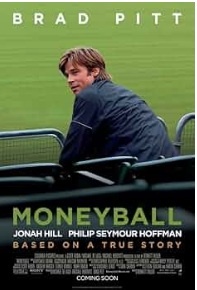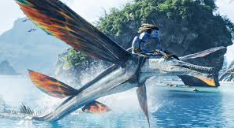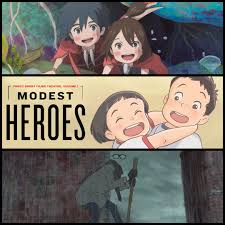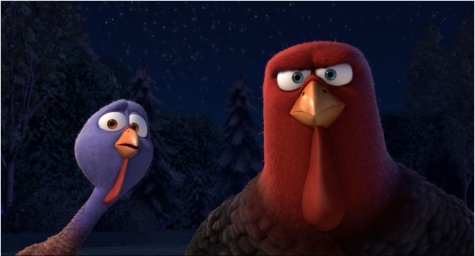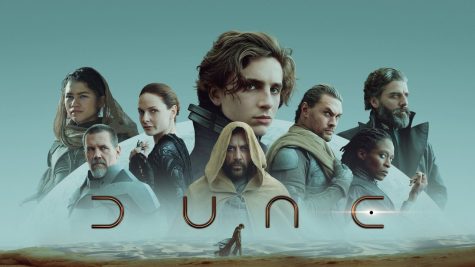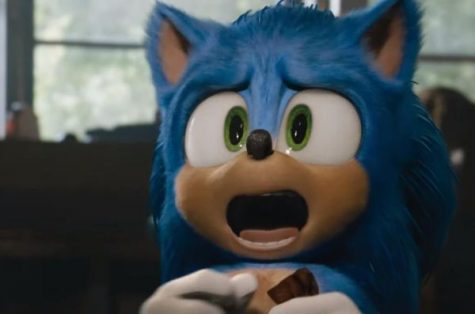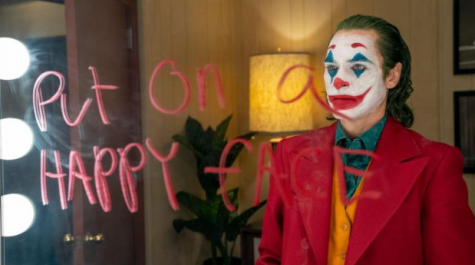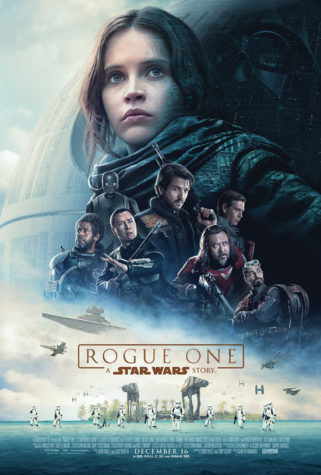Doctor Strange Review
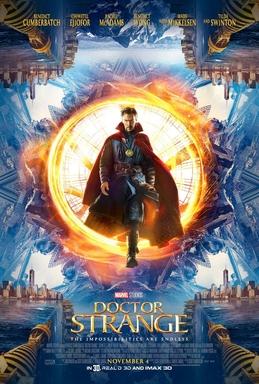
November 16, 2016
We settled in cushy chairs with the sweet smell of buttered popcorn and the not-so-sweet sound of moviegoers filling their cheeks with popcorn and crumbling the oversized bites into slop because of the Dr. Strange trailers. I am a dedicated Marvel fan, inhaling many of the franchise’s animated series’ and films, but I was excited even more so to see the story of the face of magic in Marvel Comics. Julia and I were under the spell of the film’s trailers, dazzling special effects and a lost soul finding a new purpose under the tutelage of an ancient teacher. But, in spite of the film’s brilliant effects and classic hero’s journey, the film did trade creativity for reliable sales.
Dr. Strange’s effects were dazzling, star Benedict Cumberbatch calling it “extraordinary when you do these films because part of the special effects are the real world environments that Marvel creates around you…It just melts the real with the unreal in a kind of seamless way.” It is all thanks to Computer-Generated Imagery (CGI). The CGI effects Cumberbatch is referencing are those of the mirror dimension, a reflection of the physical world that bends to the will of sorcerers like Strange and his compatriots. They reorient gravity and warp buildings. They reform the cityscape to their advantage. These psychedelic effects would not be possible with traditional special effects but CGI has, Dr. Strange is proof, evolved to the point of believability. Director Scott Derrickson and Industrial Light and Magic (ILM) undertook this story in a time when technology has caught up with imagination.
Dr. Strange embarks on the archetypal hero’s journey when he travels across the world to find Kamar-Taj. The hero’s journey is a tried and true story line that allows people to connect and comprehend the meaning behind the film or novel in which it’s included, according to The Writer’s Journey. The hero’s journey usually includes steps or stages that are all relatively similar across literature and films. The predictable actions provide a baseline for understanding so people don’t get lost in confusing worlds and the mystifying rules associated with those worlds. Dr. Strange’s hero’s journey has some of the same aspects of a classic hero’s journey, but there are differences that make the story new and interesting.
Dr. Strange starts his story in the ordinary world of neurosurgeons. The ordinary world is the starting point in all hero’s journeys. Then he receives the call to adventure when he learns of Kamar-Taj from Jonathon Pangborn. He also meets with the archetypal mentor, The Ancient One, and crosses the threshold when he enters Kamar-Taj. He faces tests in the form of being stranded on Mount Everest, finds allies in Mordo and Wong, and finds enemies in Kaecilius and Dormammu. When Dr. Strange accidentally travels to the London sanctum and fights Kaecilius, he experiences the ordeal and faces death, which is another stage in the hero’s journey. While in the London sanctum, he acquires the Cloak of Levitation, fulfilling the reward part of his journey. Dr. Strange experiences the return with the elixir when he brings home the Eye of Agamotto, which has the power to transform the world just like Dr. Strange has been transformed.
All these are common details included in the stereotypical hero’s journey storyline. However, there are differences. Also be warned, this part of the article contains spoilers if you haven’t seen the movie. So avert your eyes if you want to be surprised when you see it. When Dr. Strange learns that The Ancient One has been drawing power from Dormammu, he feels betrayed and lied to. But instead of rejecting the mystical powers and turning to the dark side like so many other heroes, the new information strengthens Dr. Strange’s resolve to defeat Kaecilius and vanquish Dormammu once and for all. He doesn’t lose the appreciation he has for her, and is still extremely concerned when she is dying. Unlike other heroes, who are too pure to allow for deviations in the quest to overcome darkness, Dr. Strange understands the need to sometimes become the darkness in order to defeat it. Another difference from the usual hero’s journey is the relationship between Dr. Strange and Christine. They don’t end up together. They had a past history as lovers, which didn’t end well, and then became flirtatious co workers who exchange snarky comments. The entire movie I expected them to get together, because Dr. Strange reveals he still loves her and values her work as a doctor, even though he would be the last one to admit it. But they don’t get together, and he doesn’t “get the girl” and they don’t become lovers again. This was a variation of the normal “hero’s journey” storyline, and I was surprised. Dr. Strange fulfilled almost all of the hero’s journey requirements, and then didn’t follow the love story.
The hero’s journey is a classic one and the effects of this story challenged the mind to deny the existence of magic but its story did not challenge the mind. Cue predictable elements like the sling ring. Cue the love-interest non-essential to the crux of the story. From the moment the Ancient One tells Dr. Strange that he cannot travel through space without his sling ring, viewers all knew he was going to lose it at some point. He was bound to do so. Dr. Strange and his compatriots have powers at their disposal like the creation of matter and bending of time and yet they cannot slip between dimensions. It is but a move of mainstream cinema to force the protagonist into a predictable situation. Unable to produce original thoughts, the film’s writers opted to trap Strange in another dimension. Wow, Marvel Comics, that never happens in your stories. Senior Katharine Cognard-Black agrees, saying “I went to the movies whilst there with my friend and we were conversing in dulcet tones about how Dr. Strange goes from novice to extremely skilled guy who can like manipulate time in like two shakes of a lamb’s tail and he was like ‘How’d that happen’ and I was like ‘cuz he’s the protagonist’ and that really applied to the entire movie.”
Worse than this predictability is the tired archetype of the non-essential love interest. Christine, a fellow doctor at the hospital at which Strange works, has an intimate past with Strange and reveals that he has the capacity to care about other people. But other characters serve this role like the Ancient One, Wong, and Mordo. They all challenge Strange to become a force of good rather than reclaiming his hands and his ego. Christine but serves the expectation that all superheroes have some love interest with whom they shelve until they need a pep talk or a warm smile. Her character is not dynamic; she does not hold Strange accountable for verbally abusing her and does not reignite a relationship with him. Marvel, I love your characters and your effects, but more of the same thing is not what I expected from a movie about the unlimited possibilities of magic.
This is not to say that Dr. Strange was all effects and no story but the story needs the sort of freshness and originality that its effects did. Had the story risen to the occasion of the dazzling effects, movie-producers could have crafted a remarkable world to remember. We appreciated the film’s loyalty to the hero’s journey on which Marvel’s characters embark but Strange’s character had far more potential.




